
可持续发展水泥基材料(英文)(Journal of Sustainable Cement-Based Materials)(国际刊号) 知网目次维普目次
- 高T2
- 高T3
- 主管单位:
- 主办单位:
中国建筑材料科学研究总院有限公司
- 国际刊号:
2165-0373;EISSN 2165-0381
- 国内刊号:
- 学科分类:
- 字数:
-
- 有无基金:
- 周期:
国际号刊-月刊
- 特殊属性:
外文期刊
- 电话:
- 邮箱:
- 复合因子:
0
- 综合因子:
0
- 收录:
知网目次,维普目次
- 级别:
高T2,高T3
期刊简介
《可持续发展水泥基材料》期刊已被查看: 次
更新频次
单位占比
一作占比
投稿指南
1、该刊只有国际刊号。
2、投稿方式:在线投稿。
3、官网网址:
https://www.tandfonline.com/journals/tscm20
4、投稿系统:
https://rp.tandfonline.com/submission/create?journalCode=TSCM
5、主办单位网址:
https://www.cbma.com.cn/cn/folder/2302/0460-1.htm
(中国建筑材料科学研究总院)
6、出刊日期:月刊,一年出版12期。
2023年9月22星期五
《可持续发展水泥基材料(英文)》期刊简介
(Journal of Sustainable Cement-Based Materials)
由中国建筑材料科学研究总院和Taylor & Francis Group共同创办的同行评议国际期刊Journal of Sustainable Cement-Based Materials于2020年10月被Science Citation Index Expanded (SCIE) 正式收录!
Journal of Sustainable Cement-Based Materials创刊于2012年,先已被Science Citation Index Expanded (SCIE) ,Emerging Sources Citation Index (ESCI),Scopus和Chemical Abstracts Service (CAS)收录。本刊旨在发表有关水泥基材料、制品和结构的理论及应用研究。是水泥基材料制备、水化和性能研究及新实验技术、分析和建模方法等领域的重要论坛。
本刊主要议题涵盖但不限于:
水泥原料及制造
水泥和混凝土的组成设计、流变和水化
水泥和混凝土外加剂
水泥基材的结构特征和性能
纤维在水泥基材料中的应用
水泥基材料性能的衰退与修复
本刊是一本名副其实的国际期刊,编辑团队成员来自加拿大、美国、印度、英国、瑞典和中国。作者更是遍布全球29个国家。
本刊主编是湖南大学土木工程学院首席教授、博士生导师史才军教授。因在工业废渣及水泥混凝土材料研究方面的杰出贡献,史教授在2001年当选为国际能源研究会的会士;2007年当选为美国混凝土学会的会士;2016年当选为RILEM(国际材料与结构研究实验联合会)会士,也是目前唯一一位中国大陆籍会士。
投稿
Journal of Sustainable Cement-Based Materials是一本Hybrid期刊,作者可以选择 “开发获取” 模式发表文章,让更多的人从中获益。编辑团队及Taylor & Francis Group承诺所有的文章将经过严格的同行评议流程。
《可持续发展水泥基材料(英文)》作者须知
(Journal of Sustainable Cement-Based Materials)
【官网信息】
Instructions for authors
About the Journal
Journal of Sustainable Cement-Based Materials is an international, peer-reviewed journal publishing high-quality, original research. Please see the journal's Aims & Scope for information about its focus and peer-review policy.
Please note that this journal only publishes manuscripts in English.
Journal of Sustainable Cement-Based Materials accepts the following types of article: Research Papers, Reviews, Communications and Discussions.
Open Access
You have the option to publish open access in this journal via our Open Select publishing program. Publishing open access means that your article will be free to access online immediately on publication, increasing the visibility, readership and impact of your research. Articles published Open Select with Taylor & Francis typically receive 32% more citations* and over 6 times as many downloads** compared to those that are not published Open Select.
Your research funder or your institution may require you to publish your article open access. Visit our Author Services website to find out more about open access policies and how you can comply with these.
You will be asked to pay an article publishing charge (APC) to make your article open access and this cost can often be covered by your institution or funder. Use our APC finder to view the APC for this journal.
Please visit our Author Services website or contact openaccess@tandf.co.uk if you would like more information about our Open Select Program.
*Citations received up to Jan 31st 2020 for articles published in 2015-2019 in journals listed in Web of Science®.
**Usage in 2017-2019 for articles published in 2015-2019.
Peer Review and Ethics
Taylor & Francis is committed to peer-review integrity and upholding the highest standards of review. Once your paper has been assessed for suitability by the editor, it will then be double blind peer reviewed by independent, anonymous expert referees. Find out more about what to expect during peer review and read our guidance on publishing ethics.
Preparing Your Paper
Structure
Your paper should be compiled in the following order: title page; abstract; keywords; main text introduction, materials and methods, results, discussion; acknowledgments; declaration of interest statement; references; appendices (as appropriate); table(s) with caption(s) (on individual pages); figures; figure captions (as a list).
Word Limits
Please include a word count for your paper. There are no word limits for papers in this journal.
Style Guidelines
Please refer to these quick style guidelines when preparing your paper, rather than any published articles or a sample copy.
Please use American spelling style consistently throughout your manuscript.
Please use single quotation marks, except where ‘a quotation is “within” a quotation’. Please note that long quotations should be indented without quotation marks.
Manuscripts should be typed, double spaced, with wide margins. Clear and concise writing is required: do not repeat data, i.e., use either tabular or graphical presentation of a set of data, not both. All textual elements should begin flushed left, with no paragraph indents. Two returns should be placed after ever element such as title, headings, paragraphs, and figure legends. Section headings should be concise and numbered sequentially, using a decimal system for subsections.
Formatting and Templates
Papers may be submitted in Word or LaTeX formats. Figures should be saved separately from the text. To assist you in preparing your paper, we provide formatting template(s).
Word templates are available for this journal. Please save the template to your hard drive, ready for use.
A LaTeX template is available for this journal. Please save the LaTeX template to your hard drive and open it, ready for use, by clicking on the icon in Windows Explorer.
If you are not able to use the template via the links (or if you have any other template queries) please contact us here.
References
Please use this reference guide when preparing your paper.
An EndNote output style is also available to assist you.
Taylor & Francis Editing Services
To help you improve your manuscript and prepare it for submission, Taylor & Francis provides a range of editing services. Choose from options such as English Language Editing, which will ensure that your article is free of spelling and grammar errors, Translation, and Artwork Preparation. For more information, including pricing, visit this website.
Checklist: What to Include
Author details. All authors of a manuscript should include their full name and affiliation on the cover page of the manuscript. Where available, please also include ORCiDs and social media handles (Facebook, Twitter or LinkedIn). One author will need to be identified as the corresponding author, with their email address normally displayed in the article PDF (depending on the journal) and the online article. Authors’ affiliations are the affiliations where the research was conducted. If any of the named co-authors moves affiliation during the peer-review process, the new affiliation can be given as a footnote. Please note that no changes to affiliation can be made after your paper is accepted. Read more on authorship.
Should contain a structured abstract of 150 words. A structured abstract should cover (in the following order): the purpose of the research, the principal results and major conclusions. The abstract should be concise and factual. An abstract is often presented separately from the article, so it must be able to stand alone; for this reason, references are not permitted. Also, non-standard or uncommon abbreviations should be avoided, but if essential they must be defined at their first mention in the abstract itself.
You can opt to include a video abstract with your article. Find out how these can help your work reach a wider audience, and what to think about when filming.
Between 6 and 6 keywords. Read making your article more discoverable, including information on choosing a title and search engine optimization.
Funding details. Please supply all details required by your funding and grant-awarding bodies as follows:
For single agency grants
This work was supported by the [Funding Agency] under Grant [number xxxx].
For multiple agency grants
This work was supported by the [Funding Agency #1] under Grant [number xxxx]; [Funding Agency #2] under Grant [number xxxx]; and [Funding Agency #3] under Grant [number xxxx].
Disclosure statement. This is to acknowledge any financial interest or benefit that has arisen from the direct applications of your research. Further guidance on what is a conflict of interest and how to disclose it.
Biographical note. Please supply a short biographical note for each author. This could be adapted from your departmental website or academic networking profile and should be relatively brief (e.g. no more than 200 words).
Data availability statement. If there is a data set associated with the paper, please provide information about where the data supporting the results or analyses presented in the paper can be found. Where applicable, this should include the hyperlink, DOI or other persistent identifier associated with the data set(s). Templates are also available to support authors.
Data deposition. If you choose to share or make the data underlying the study open, please deposit your data in a recognized data repository prior to or at the time of submission. You will be asked to provide the DOI, pre-reserved DOI, or other persistent identifier for the data set.
Geolocation information. Submitting a geolocation information section, as a separate paragraph before your acknowledgements, means we can index your paper’s study area accurately in JournalMap’s geographic literature database and make your article more discoverable to others. More information.
Supplemental online material. Supplemental material can be a video, dataset, fileset, sound file or anything which supports (and is pertinent to) your paper. We publish supplemental material online via Figshare. Find out more about supplemental material and how to submit it with your article.
Figures. Figures should be high quality (1200 dpi for line art, 600 dpi for grayscale and 300 dpi for colour, at the correct size). Figures should be supplied in one of our preferred file formats: EPS, PS, JPEG, TIFF, or Microsoft Word (DOC or DOCX) files are acceptable for figures that have been drawn in Word. For information relating to other file types, please consult our Submission of electronic artwork document.
Tables. Tables should present new information rather than duplicating what is in the text. Readers should be able to interpret the table without reference to the text. Please supply editable files.
Equations. If you are submitting your manuscript as a Word document, please ensure that equations are editable. More information about mathematical symbols and equations.
Units. Please use SI units (non-italicized).
Using Third-Party Material in your Paper
You must obtain the necessary permission to reuse third-party material in your article. The use of short extracts of text and some other types of material is usually permitted, on a limited basis, for the purposes of criticism and review without securing formal permission. If you wish to include any material in your paper for which you do not hold copyright, and which is not covered by this informal agreement, you will need to obtain written permission from the copyright owner prior to submission. More information on requesting permission to reproduce work(s) under copyright.
Submitting Your Paper
This journal uses ScholarOne Manuscripts to manage the peer-review process. If you haven't submitted a paper to this journal before, you will need to create an account in ScholarOne. Please read the guidelines above and then submit your paper in the relevant Author Centre, where you will find user guides and a helpdesk.
If you are submitting in LaTeX, please convert the files to PDF beforehand (you will also need to upload your LaTeX source files with the PDF).
Please note that Journal of Sustainable Cement-Based Materials uses Crossref™ to screen papers for unoriginal material. By submitting your paper to Journal of Sustainable Cement-Based Materials you are agreeing to originality checks during the peer-review and production processes.
On acceptance, we recommend that you keep a copy of your Accepted Manuscript. Find out more about sharing your work.
……
更多详情:
https://www.tandfonline.com/action/authorSubmission?show=instructions&journalCode=tscm20
上一篇:当代中国话语研究(中英文)(集刊)下一篇:上海土木科技(内刊)
《可持续发展水泥基材料》同类建筑科学期刊
-
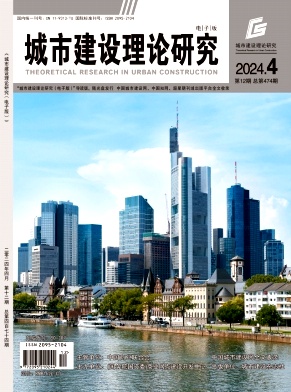
城市建设理论研究(电子版)
国级普刊
CN中文-旬刊影响因子0
-
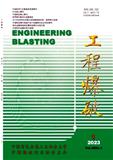
工程爆破
北核,科核,CSCD扩,高T3,武B+
CN中文-双月刊影响因子0.934
-
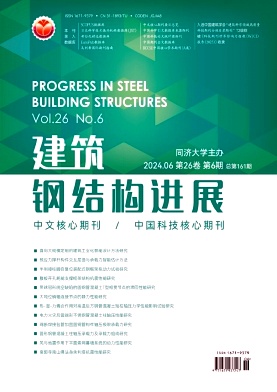
建筑钢结构进展
北核,科核,CSCD扩,武A,高T2
CN中文-月刊影响因子0.955
-
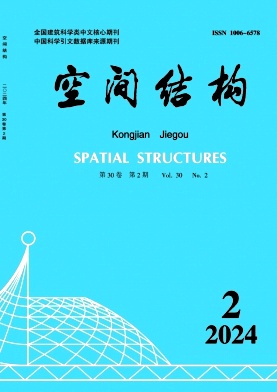
空间结构
北核,CSCD扩,武B+
CN中文-季刊影响因子0.765
-

建筑科学
北核,科核,CSCD扩,武A-,高T3
CN中文-月刊影响因子1.197
-
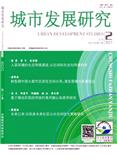
城市发展研究
C刊,北核,CSCD,科核,武A+,高T2,高T3,AMI扩
CN中文-月刊影响因子3.762
-

现代城市研究
北核,科核,武A,高T3,AMI扩
CN中文-月刊影响因子1.988
-
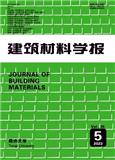
建筑材料学报
北核,CSCD,科核,武A,高T1,高T2,EI(中国2024)
CN中文-月刊影响因子2.425
常见问题
-
可持续发展水泥基材料杂志社官网、联系方式是什么?
可持续发展水泥基材料杂志社官网:https://www.tandfonline.com/journals/tscm20
投稿网址:https://rp.tandfonline.com/submission/create?journalCode=TSCM -
可持续发展水泥基材料杂志是核心期刊么?
可持续发展水泥基材料不是核心期刊,级别是:高T2,高T3, 是:建筑科学分类下的知网目次,维普目次收录的期刊。
-
请问你们是可持续发展水泥基材料杂志社吗?
我们不是《可持续发展水泥基材料》杂志社。本站主要从事期刊信息展示与期刊推荐,不是任何杂志官网,直投稿件请联系杂志社。本站仅提供免费的学术指导、论文辅导、期刊投稿信息整理收集服务。
-
你们指导服务后可以保证文章被发表吗?
期刊发表的成功与否,主要取决于文章内容的质量。编辑老师会根据研究领域、创新性等多因素进行考量。我们会帮助您理解期刊的发表要求,助力提升发表几率,从而增加发表的机会。
-
晋级论文能否在报纸上发表?
在学术界,论文的发表往往被视为研究者职业发展的重要一环。晋级论文,即为了获得更高职称或学术地位而撰写的学术论文,通常需在专业期刊上发表。然而,许多人可能会问
